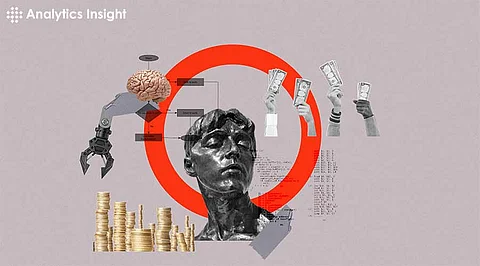

AI is rapidly evolving financial technologies through efficiency, innovation, and growth opportunities. Let’s explore in detail several key trends and innovations that are shaping the future of AI in financial markets for 2025.
Predictive analytics and machine learning are some of the most significant trends in AI for financial markets. Large datasets can be analyzed in real-time with the help of these AI systems.
Predictive analytics also help in identifying patterns and predict the movement of markets correctly. These systems predict future trends by using historical stock prices, corporate earnings reports, social media sentiment, and other economic indicators.
Machine learning models, including supervised, unsupervised, and reinforcement learning, are being applied for better accuracy in the optimization of trading strategies.
Example: Goldman Sachs uses Kensho, an AI firm help to predict the stock market trend and automate trading. The AI used by Kensho makes predictions based on big data like news, earnings reports, and movements in the market.
Generative AI and NLP analyse unstructured data effectively providing useful insights, thereby changing the face of financial markets completely.
Financial news articles, social media posts, and corporate announcements are analyzed by AI-powered sentiment analysis tools. These tools track market sentiment to predict how stock prices will move. Such power allows traders and investors to make more informed decisions based on real-time facts, as well as public opinion.
Example: Bloomberg's AI takes advantage of NLP to scan for, understand, or process thousands of news articles and social media posts daily. Hence, providing market insights, so the readers get accurate information for making trading decisions.
RPA refers to autonomous software agents for various business processes such as data entry, email responses, and transaction processing. It helps in cost-cutting, and diversion of human resources to more strategic activities, thereby, increasing productivity.
Example: JP Morgan's Contract Intelligence (COiN) platform automates the review of legal documents, which decreases the time taken from thousands of hours to seconds.
Agentic AI, also referred to as AI with agency, is one of the top financial market trends for 2025. This class of AI is beyond query-response architecture. It is designed to execute enterprise-relevant tasks autonomously.
Agentic AI can support decision-making, enhance situational awareness, and provide insights from derivative events which can not be easily found by human analysts.
Banking groups and other financial services companies are researching the application of agentic AI to provide a virtual workforce of AI agents. These AI agents will serve as complementary staff to human employees.
Example: BlackRock's Aladdin, this risk management system provides insights and execution strategies for financial decision-making without human intervention.
Personalization is emerging as an increasingly critical aspect of wealth management and financial advisory services. AI is used to understand personal behaviour, decisions, and appetite for risk for making customized financial plans. This has been driven by the desire for the need for transparency, access, and control over one's future finances.
Example: Wealthfront is a robo-advisor that uses AI to craft an amazingly personalized investment portfolio based on user data and preferences.
Fintech firms have invested a lot in tech infrastructure to deliver frictionless digital platforms. This lets client access information about their finances, take advice, and execute transactions with minimal in-person interactions.
This financial market trend is expected to continue in 2025 with the innovation of a hybrid model. The model will merge digital self-service and human expertise.
Example: Betterment, a simple, seamless online financial advisor that offers a smooth digital interface for portfolio management. So that users can receive automated investment advice anytime.
Robo-advisors and automated investment platforms have reduced fees for taking financial advice drastically. They have decreased the need for customers to take help from banks and other traditional financial institutions for wealth management.
Therefore, this trend is pushing banks and financial institutions to demonstrate their value propositions to customers in a competitive playing field.
Example: Charles Schwab, as a result of the rise of low-cost robo-advisors, has introduced zero-commission trades and financial planning subscription services.
These trends and innovations herald the transformative power of AI in financial markets, unlocking new avenues for growth. It is up to the financial industry to evolve and embrace such breakthroughs to maintain the competitive edge as we hurtle toward 2025. Traditional financial institutions should focus on meeting clients' and investors' shifting needs to maintain their lead in the market.
